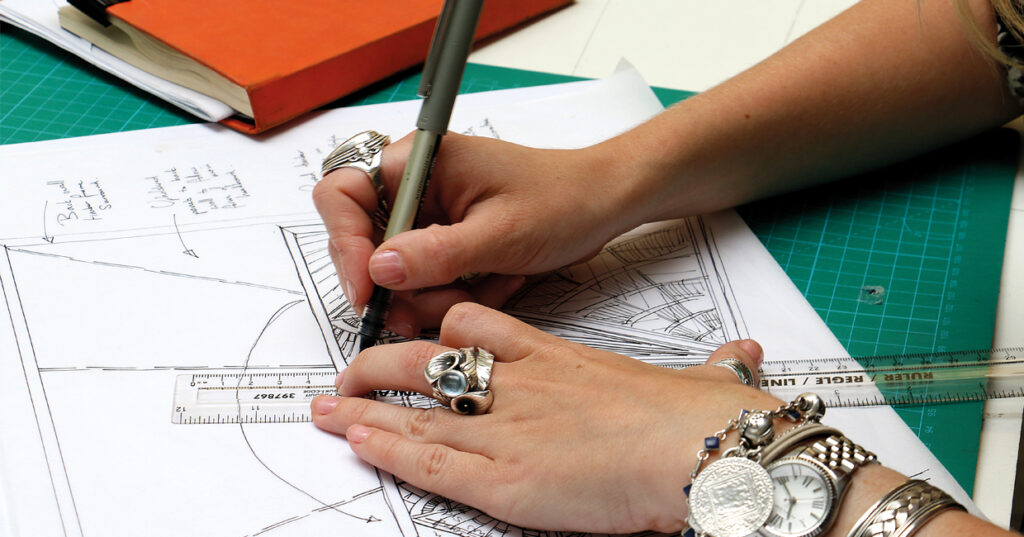Encapsulating the nostalgia and romance of the Golden age of travel, the Venice Simplon-Orient-Express from Belmond travels between London, Paris and Venice from March to November, and from Paris to Istanbul once a year in August.
Led by Rachel Johnson, vice-president and London studio director at Wimberly Interiors, the Grand Suites extend the 1920’s and 30’s styling of the carriages. Many of the original features and fixings have been retained within the accommodation, honouring the brand’s distinct heritage, while embracing the individual style, landscapes and cultures of each of the train’s destinations.
The Paris Suite, for example, takes its inspiration from the city’s historic love affair with the art deco movement. Wimberly Interiors has created a light, crisp colour palette here, complete with exquisite decorative details. Paris’ haute couture and gastronomic excellence is evoked through the elegant furnishings, delicate fabrics, crystal barware and Lalique crystal panels.
With its grand palette of damask silks, blue and silver hues, the Venice Suite celebrates the city’s baroque and renaissance heritage. Authentic, local craftsmanship is key here, with traditional Venetian mirrors and an antique tapesty sourced from Venice.
Finally, the rich patterning of the Topkapi Palace, traditional Ottoman design and Instanbul’s famous Grand Bazaar, provided a rich tapestry of inspiration for the design of the Istanbul Suite. Wimberly Interiors has opted for hand-carved timber and marquetry panel borders accented with mother-of-pearl, embossed leather, white amber crystalware and exaggerated metal details to channel a sense of this opulence.
The Grand Suites will launch in 2018, offering an authentic and entirely indulgent experience, with every modern comfort.
Q&A – RACHEL JOHNSON, WIMBERLY INTERIORS
How does it feel to work on such a unique, and historically significant project?
The Venice Simplon-Orient-Express is a true art deco icon with an incredibly rich history. It has been a pleasure working closely with Belmond to bring new life to the original Leopold, capturing the epitome of classic luxury travel that the legendary train exudes.
Saying this, what have been the unique challenges you’ve encountered, and how did you tackle them?
It was extremely important when developing the design concept that we embraced the unique story and history of the brand while trying to introduce the amenities that a modern-day luxury traveller demands.
The biggest challenge was to create a new level of luxury accommodation within the tight spatial restrictions on the train. Every piece of furniture was designed bespoke and scaled down, and we utilised the space under the sofas, creating large storage areas for luggage.
“The design for the three suites draws inspiration from the romance, adventure, and style of each of the destinations the train weaves through”
How did you go about ensuring that the design was sensitive to the history of the cabins, while incorporating the contemporary elements today’s travellers expect?
Original fixings and features from the original Leopold Car have been preserved, and reused or repurposed where possible, bringing an authentic richness to the interior.
We carefully selected individual design components made by traditional artisans and sourced unique one-off pieces from the period, ensuring the suites felt genuine and timeless.
What themes / inspirations inform the interiors of the Grand suites?
The design for the three suites draws inspiration from the romance, adventure and style of each of the destinations the train weaves through; Paris, the train’s home; Venice, one of the train’s most popular overnight trips; and Istanbul, the destination of the extravagant annual three-night trip.
Could you talk about some of the individual furnishings/suppliers used for the project?
Throughout this project, we have sourced items with an authentic connection to the Venice Simplon-Orient-Express. Each item derives from a supplier with an existing connection to the train and is either an antique art deco original or created in the city of its destination suite.
One of the key design elements in each suite is the extravagant high-gloss marquetry, which is hand-crafted in the South of France using timber that has been individually sourced from around the world, blending the unique rich traditional patterns of each city with the art deco design history of the train.
We have looked to the current train for inspiration, incorporating specific design elements into the suites. For example, the Lalique crystal panels featured in the Paris suite can also be found in one of the train’s restaurant cars. Combining these distinct elements together have helped to seamlessly blend the new designs with the unique story of the train.
Although the cabins each reflect the unique character of a different city, what do you feel ties the design together as a whole?
Each suite has the same architectural design, creating a familiar feel throughout the three suites. Bespoke detailing and key FF&E pieces, such as the feature headboard walls, glass chandeliers, and intricate timber marquetry wall panels, have been influenced and designed specifically to evoke an authentic sense of each city.
What has been the most enjoyable aspect of the project for you personally?
Working with the skilled engineers and craftsmen based in Clermont-Ferrand, France, has been incredibly rewarding. Most of the team have been working on the restoration of the train for 10-20 years, or more. From the men in the workshop who strip and repair the shells of the train cars each year, to the family-run company who have been renewing and crafting the intricate timber marquetry throughout the train since its original restoration.
Every individual has a personal connection to the train, and the passion really shows through in their enthusiasm and the unmistakable quality of the craftsmanship.



